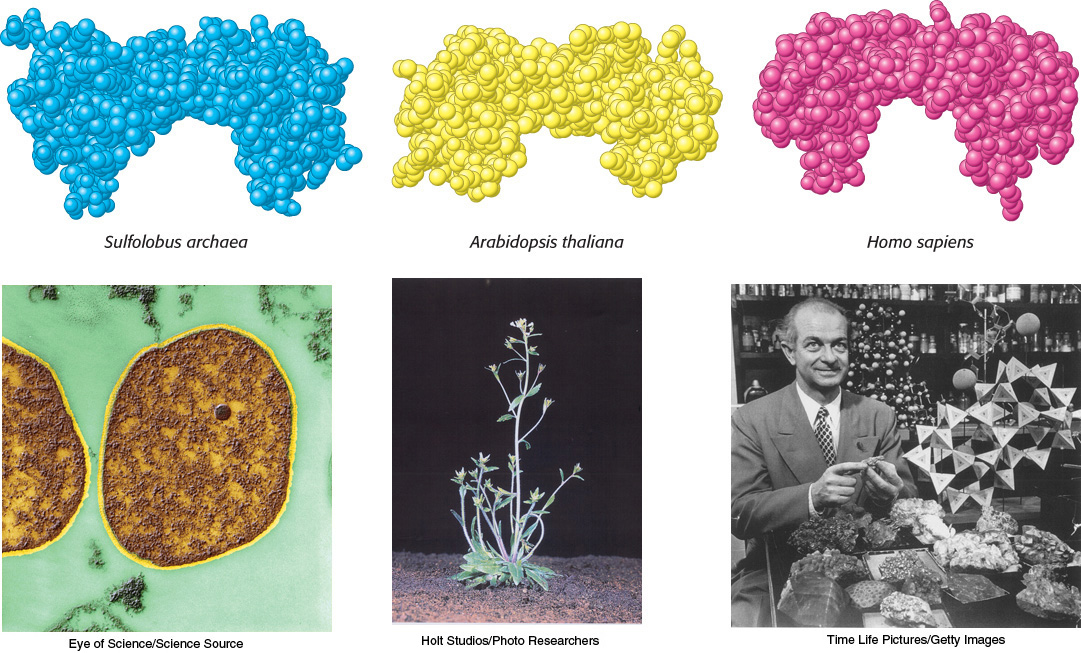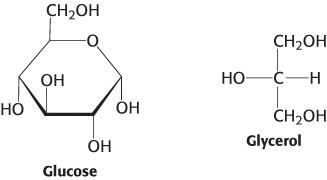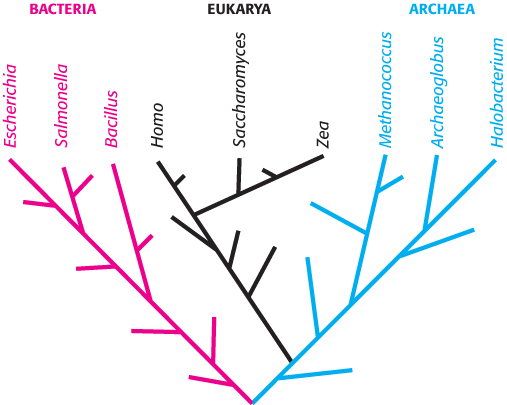1.1Biochemical Unity Underlies Biological Diversity
Biochemical Unity Underlies Biological Diversity
The biological world is magnificently diverse. The animal kingdom is rich with species ranging from nearly microscopic insects to elephants and whales. The plant kingdom includes species as small and relatively simple as algae and as large and complex as giant sequoias. This diversity extends further when we descend into the microscopic world. Organisms such as protozoa, yeast, and bacteria are present with great diversity in water, in soil, and on or within larger organisms. Some organisms can survive and even thrive in seemingly hostile environments such as hot springs and glaciers.
2
The development of the microscope revealed a key unifying feature that underlies this diversity. Large organisms are built up of cells, resembling, to some extent, single-

As mentioned earlier, biochemistry is the study of the chemistry of life processes. These processes entail the interplay of two different classes of molecules: large molecules such as proteins and nucleic acids, referred to as biological macromolecules, and low-

Members of both these classes of molecules are common, with minor variations, to all living things. For example, deoxyribonucleic acid (DNA) stores genetic information in all cellular organisms. Proteins, the macromolecules that are key participants in most biological processes, are built from the same set of 20 building blocks in all organisms. Furthermore, proteins that play similar roles in different organisms often have very similar three-
3
Key metabolic processes also are common to many organisms. For example, the set of chemical transformations that converts glucose and oxygen into carbon dioxide and water is essentially identical in simple bacteria such as Escherichia coli (E. coli) and human beings. Even processes that appear to be quite distinct often have common features at the biochemical level. Remarkably, the biochemical processes by which plants capture light energy and convert it into more-
These observations overwhelmingly suggest that all living things on Earth have a common ancestor and that modern organisms have evolved from this ancestor into their present forms. Geological and biochemical findings support a time line for this evolutionary path (Figure 1.2). On the basis of their biochemical characteristics, the diverse organisms of the modern world can be divided into three fundamental groups called domains: Eukarya (eukaryotes), Bacteria, and Archaea. Domain Eukarya comprises all multicellular organisms, including human beings as well as many microscopic unicellular organisms such as yeast. The defining characteristic of eukaryotes is the presence of a well-


Much of this book will explore the chemical reactions and the associated biological macromolecules and metabolites that are found in biological processes common to all organisms. The unity of life at the biochemical level makes this approach possible. At the same time, different organisms have specific needs, depending on the particular biological niche in which they evolved and live. By comparing and contrasting details of particular biochemical pathways in different organisms, we can learn how biological challenges are solved at the biochemical level. In most cases, these challenges are addressed by the adaptation of existing macromolecules to new roles rather than by the evolution of entirely new ones.
Biochemistry has been greatly enriched by our ability to examine the three-
4